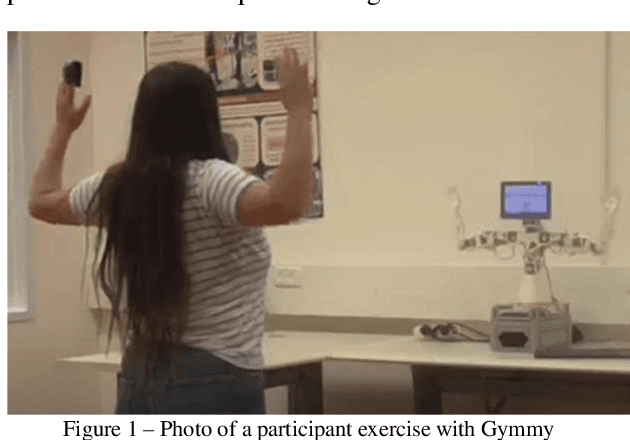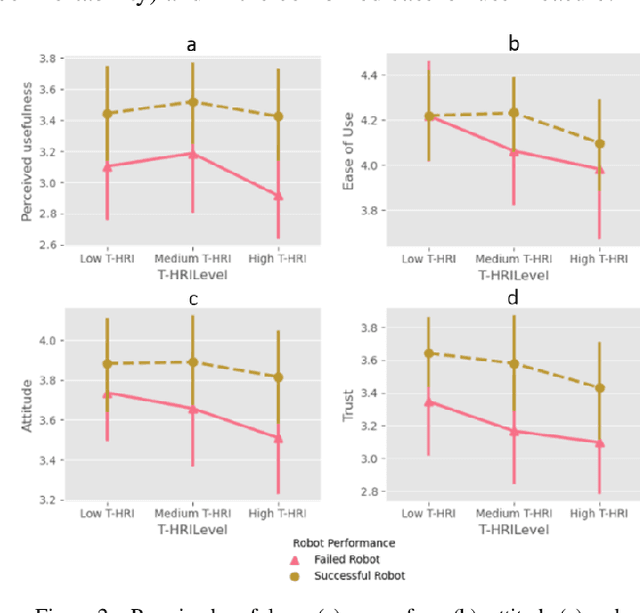Maya Krakovski
Older adults acceptance of SARs: The link between anticipated and actual interaction
Sep 04, 2022Abstract:This study demonstrates how anticipated and actual interactions shape the QE of SARs among older adults. The study consisted of two parts: an online survey to explore the anticipated interaction through video viewing of a SAR and an acceptance study where older adults interacted with the robot. Both parts of this study were completed with the assistance of Gymmy, a robotic system that our lab developed for training older adults in physical and cognitive activities. Both study parts exhibited similar user responses, indicating that users acceptance of SARs can be predicted by their anticipated interaction. Index Terms: Aging, human-robot interaction, older adults, quality evaluation, socially assistive robots, technology acceptance, technophobia, trust, user experience.
Robotic Exercise Trainer: How Failures and T-HRI Levels Affect User Acceptance and Trust
Sep 04, 2022

Abstract:Physical activity is important for health and wellbeing, but only few fulfill the World Health Organization's criteria for physical activity. The development of a robotic exercise trainer can assist in increasing training accessibility and motivation. The acceptance and trust of users are crucial for the successful implementation of such an assistive robot. This can be affected by the transparency of the robotic system and the robot's performance, specifically, its failures. The study presents an initial investigation into the transparency levels as related to the task, human, robot, and interaction (T-HRI), with robot behavior adjusted accordingly. A failure in robot performance during part of the experiments allowed to analyze the effect of the T-HRI levels as related to failures. Participants who experienced failure in the robot's performance demonstrated a lower level of acceptance and trust than those who did not experience this failure. In addition, there were differences in acceptance measures between T-HRI levels and participant groups, suggesting several directions for future research.
 Add to Chrome
Add to Chrome Add to Firefox
Add to Firefox Add to Edge
Add to Edge